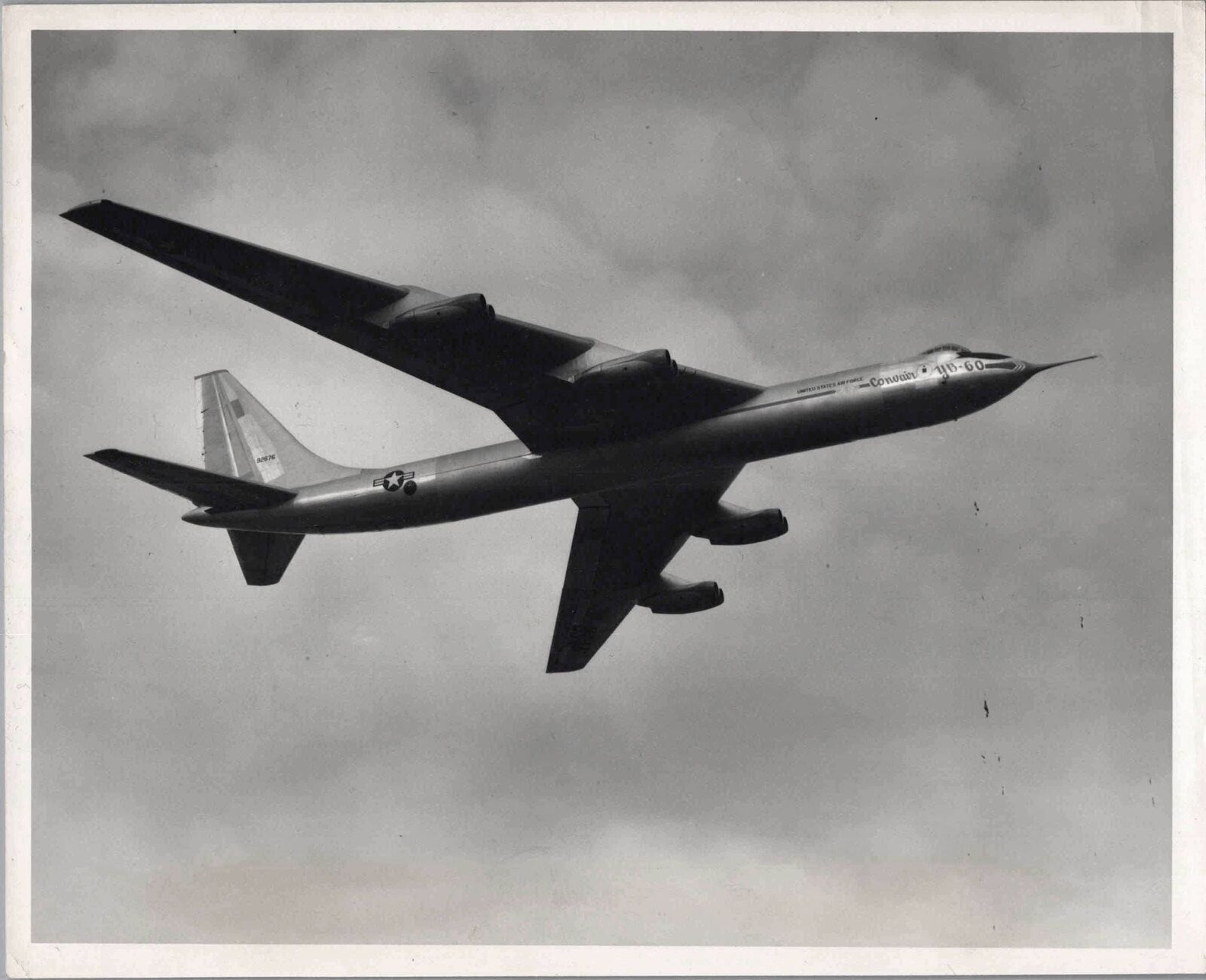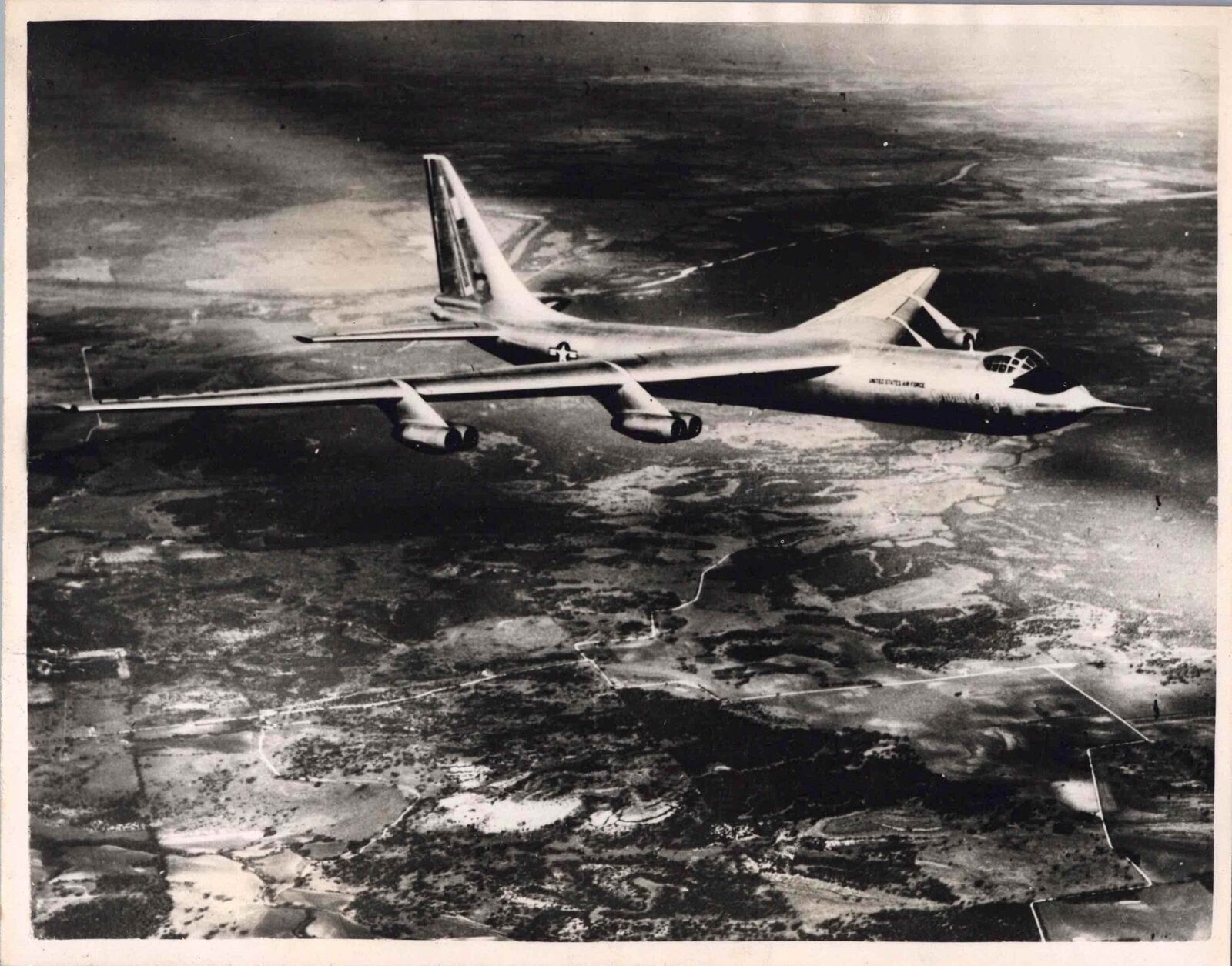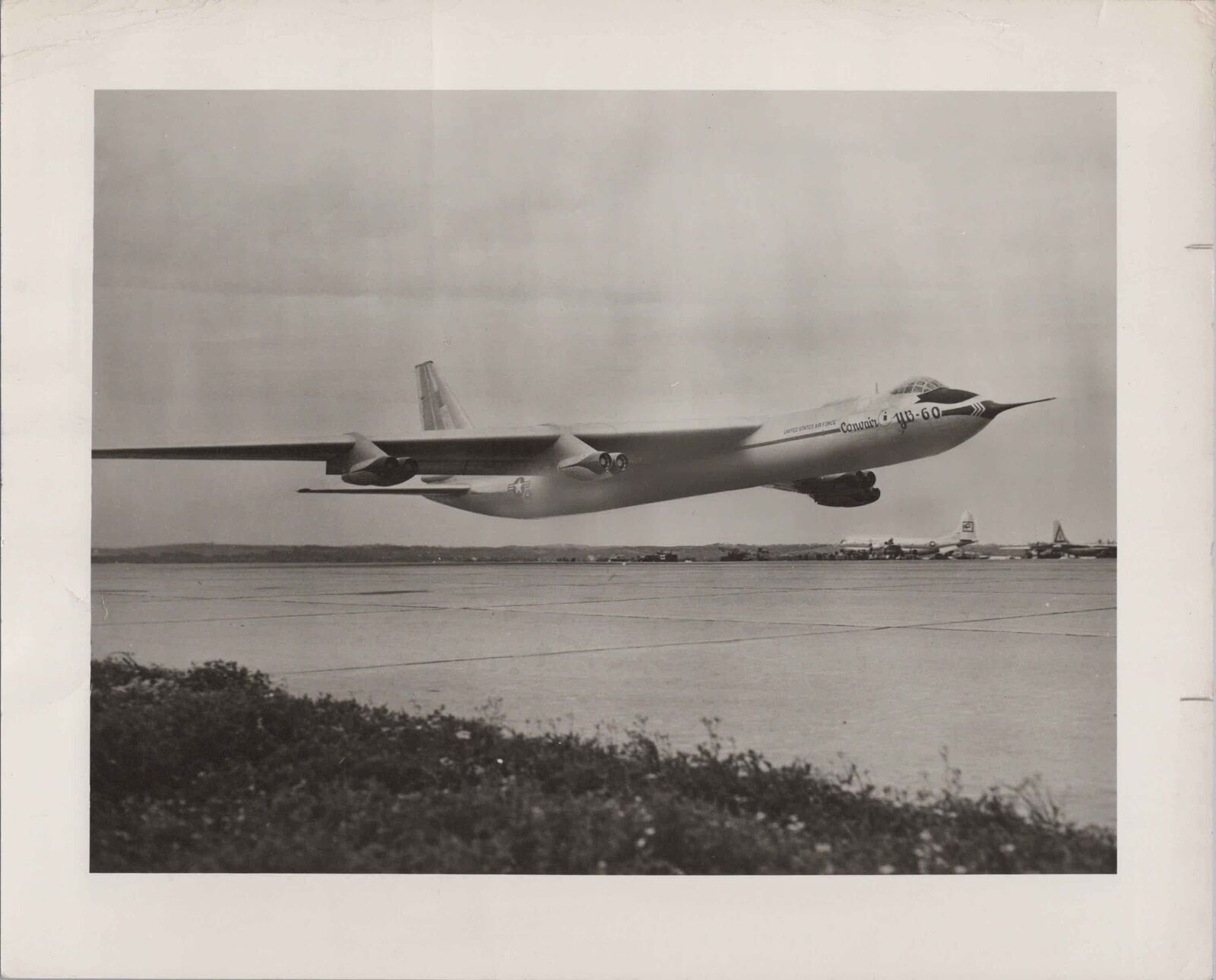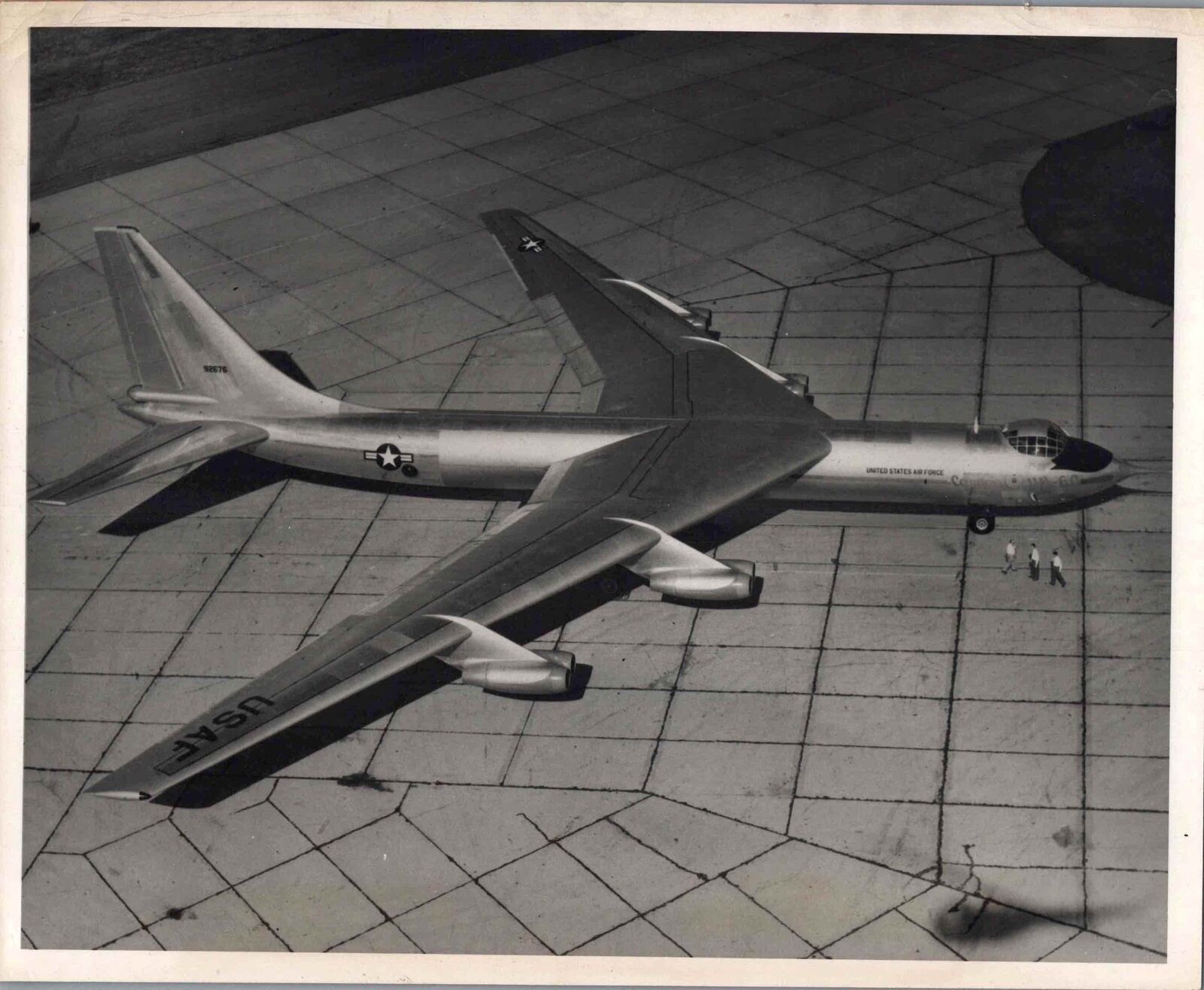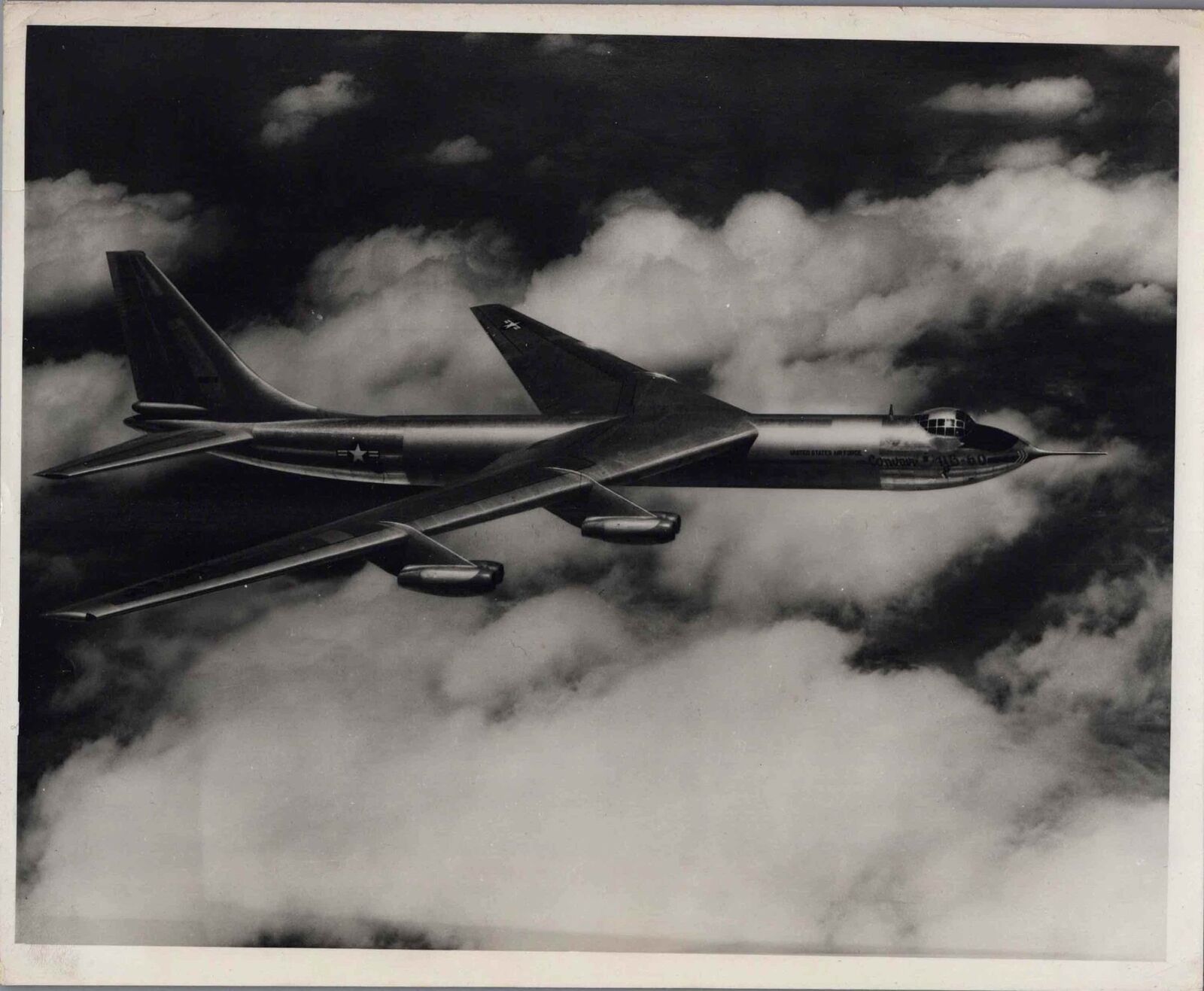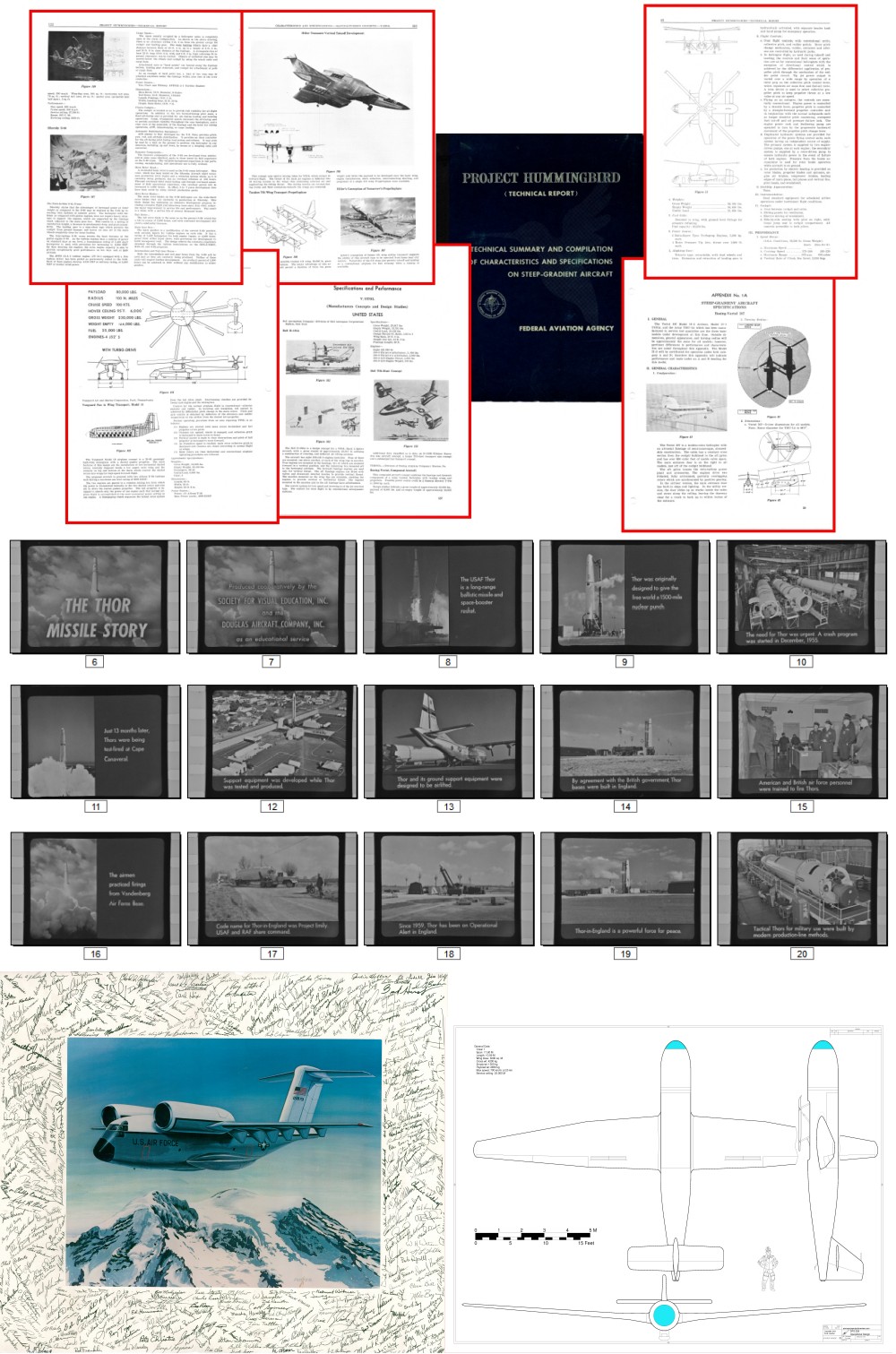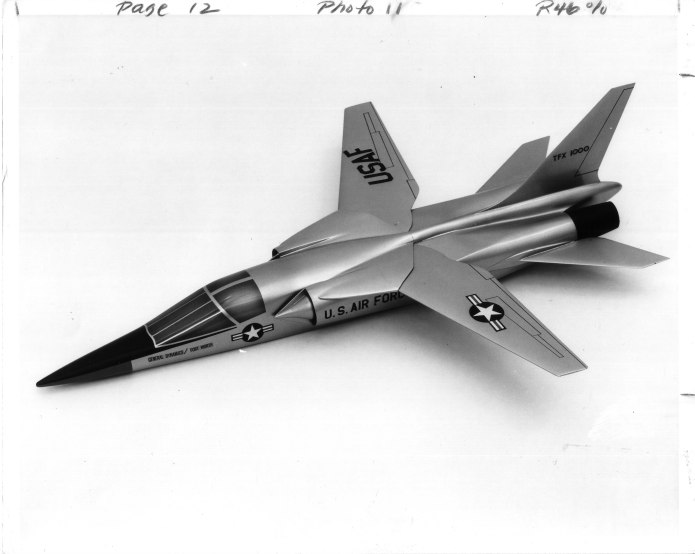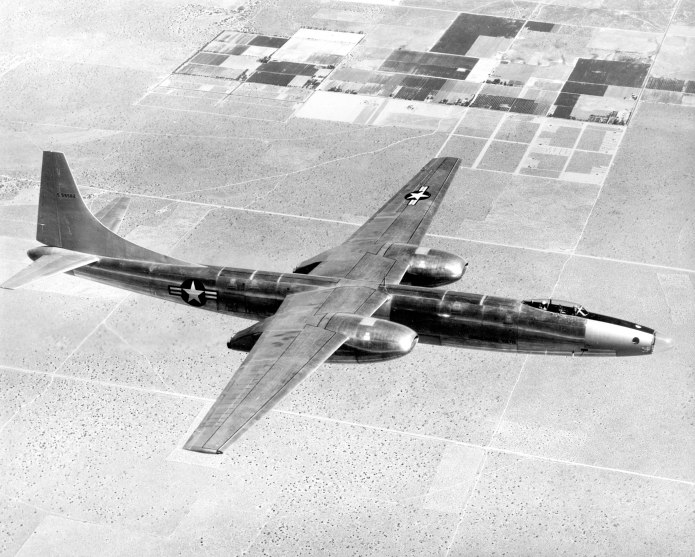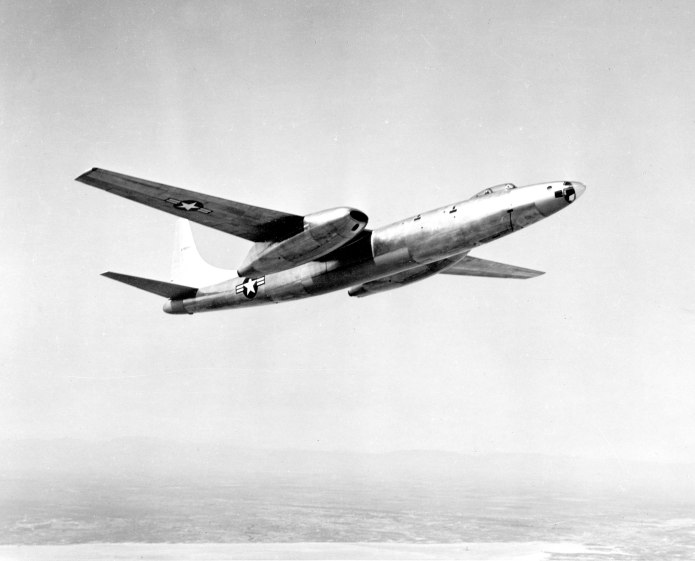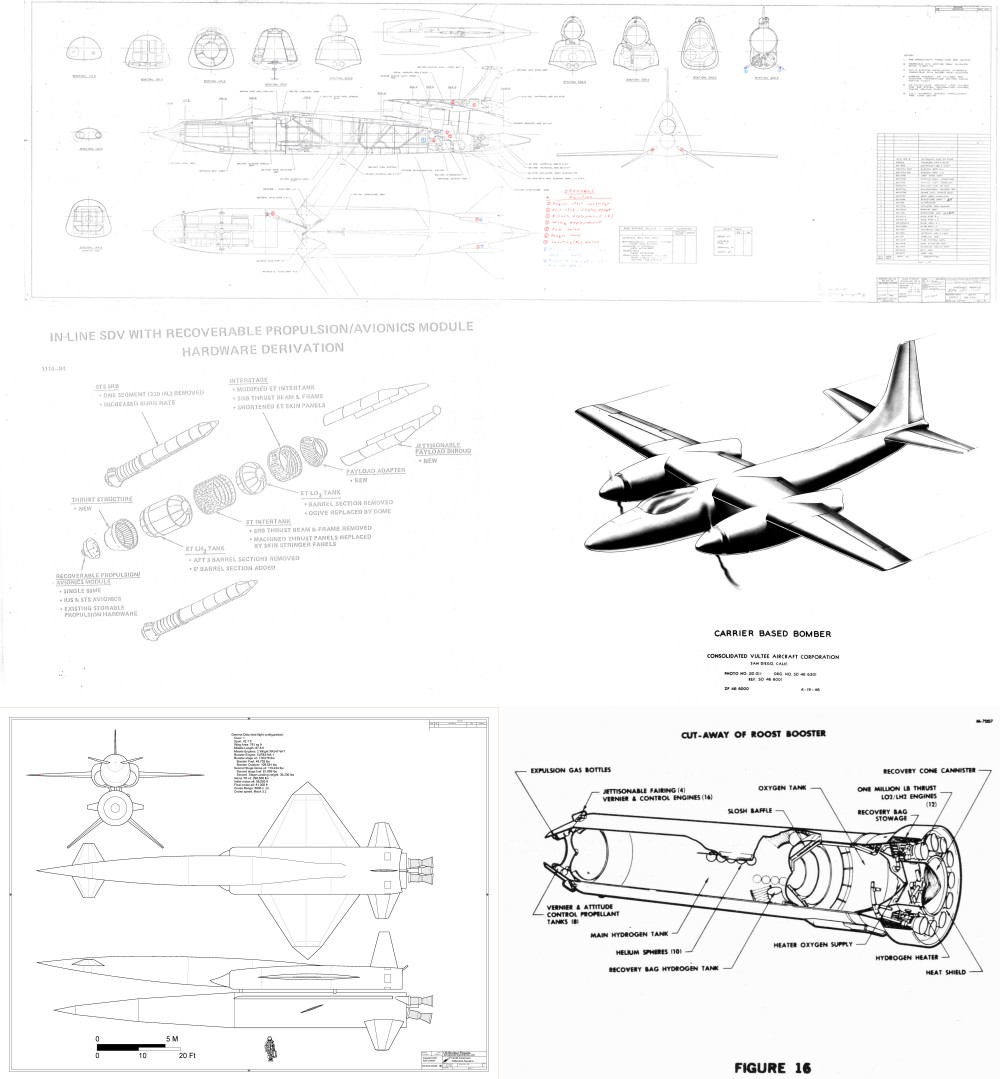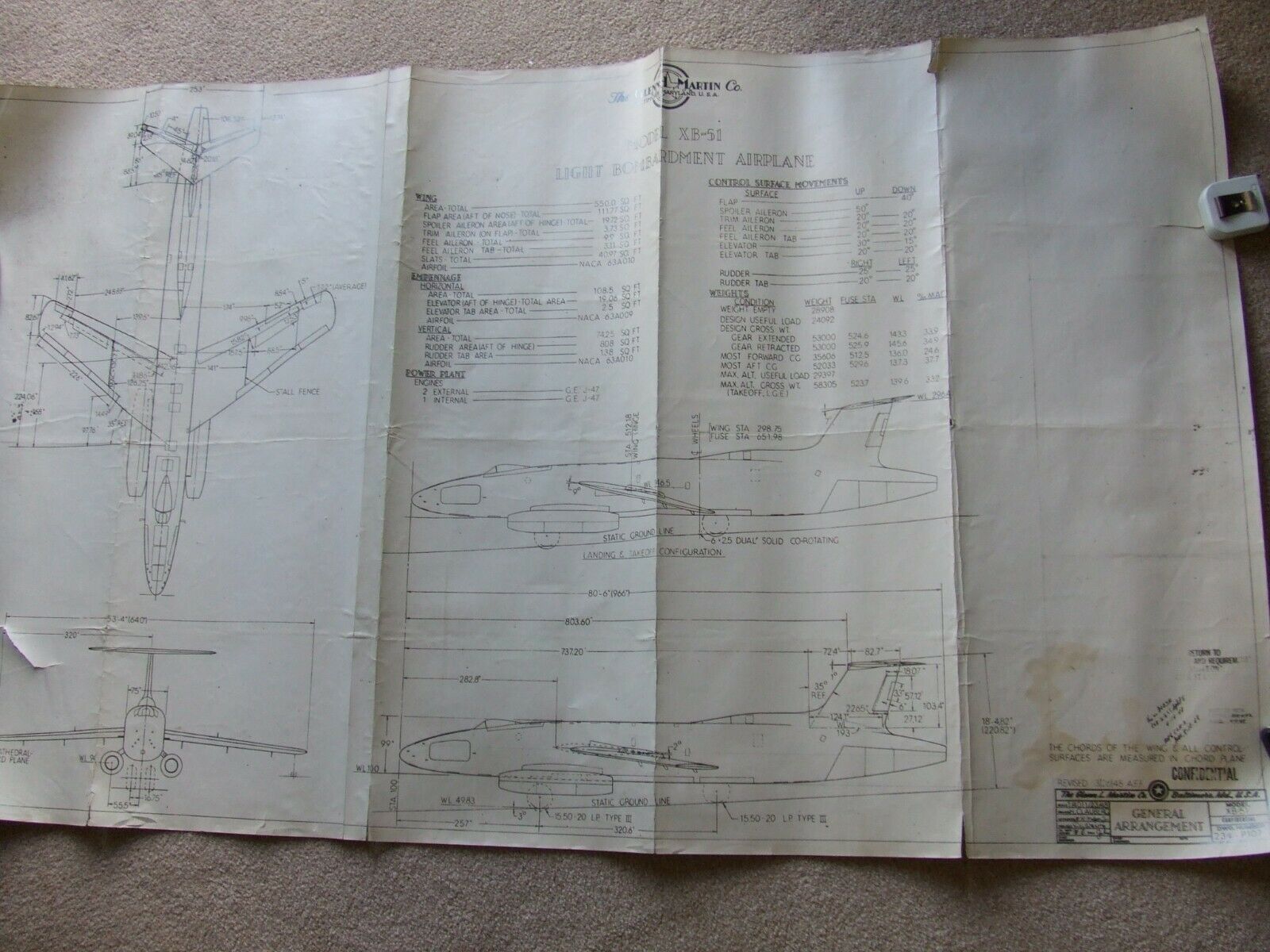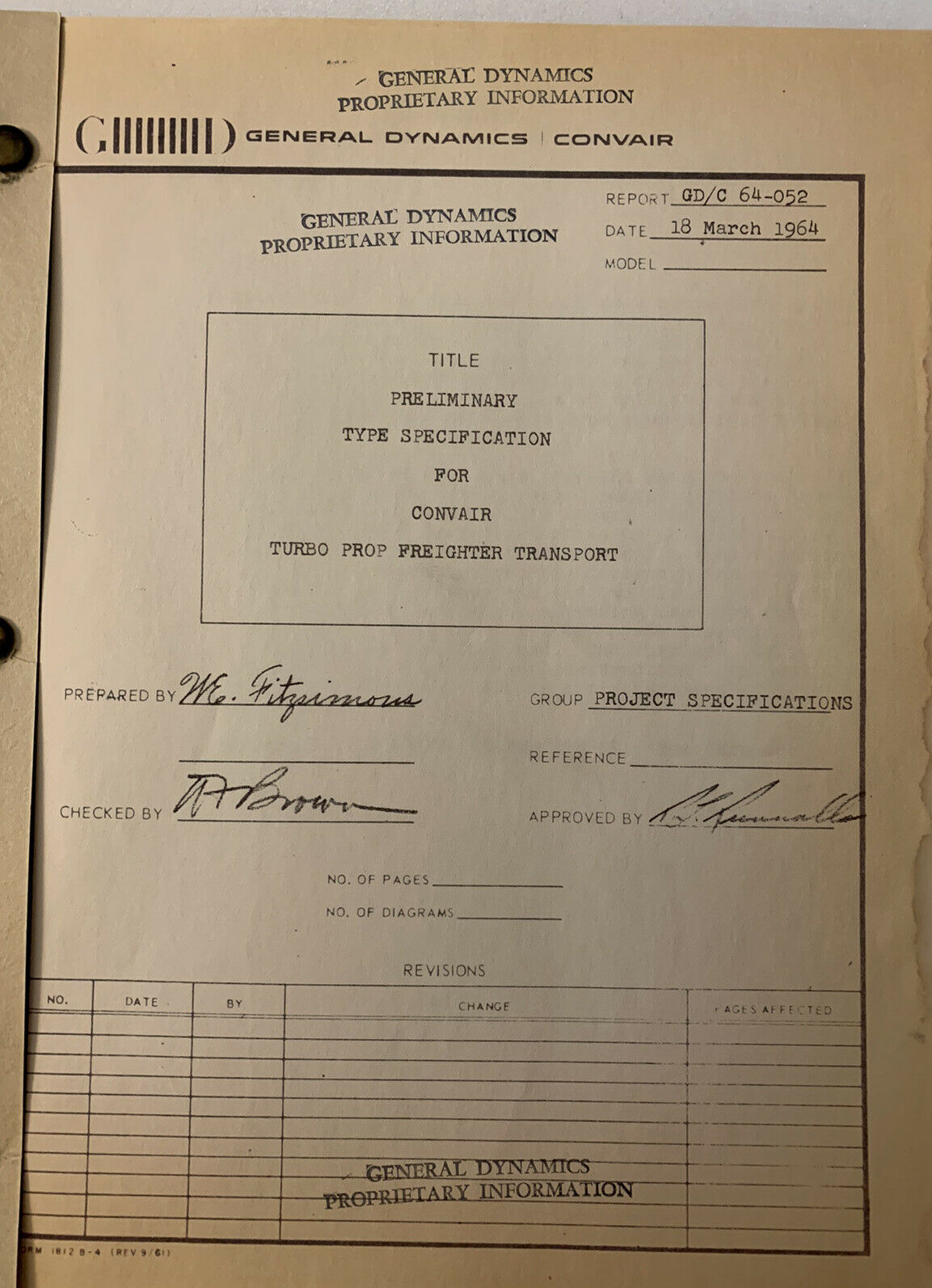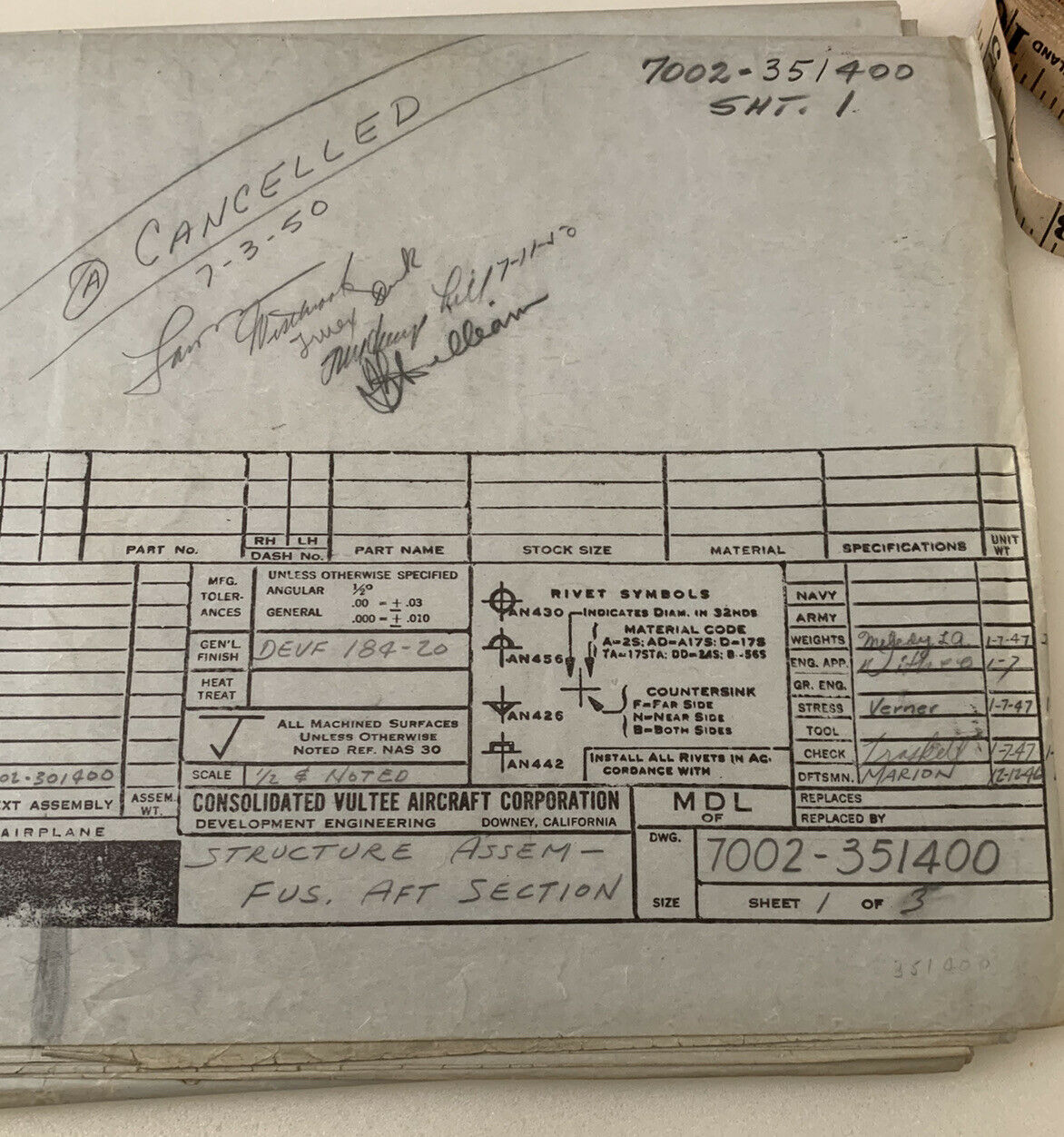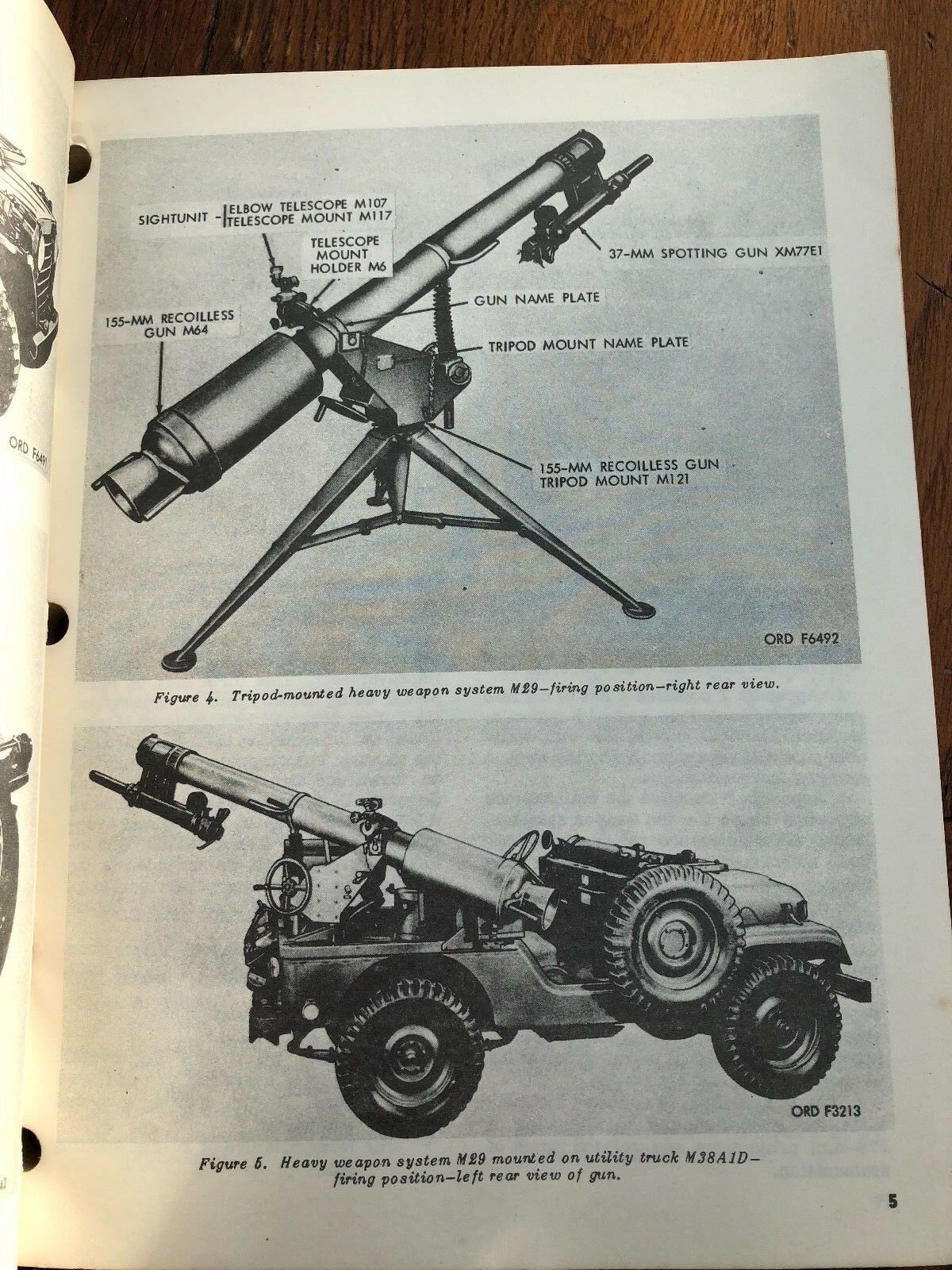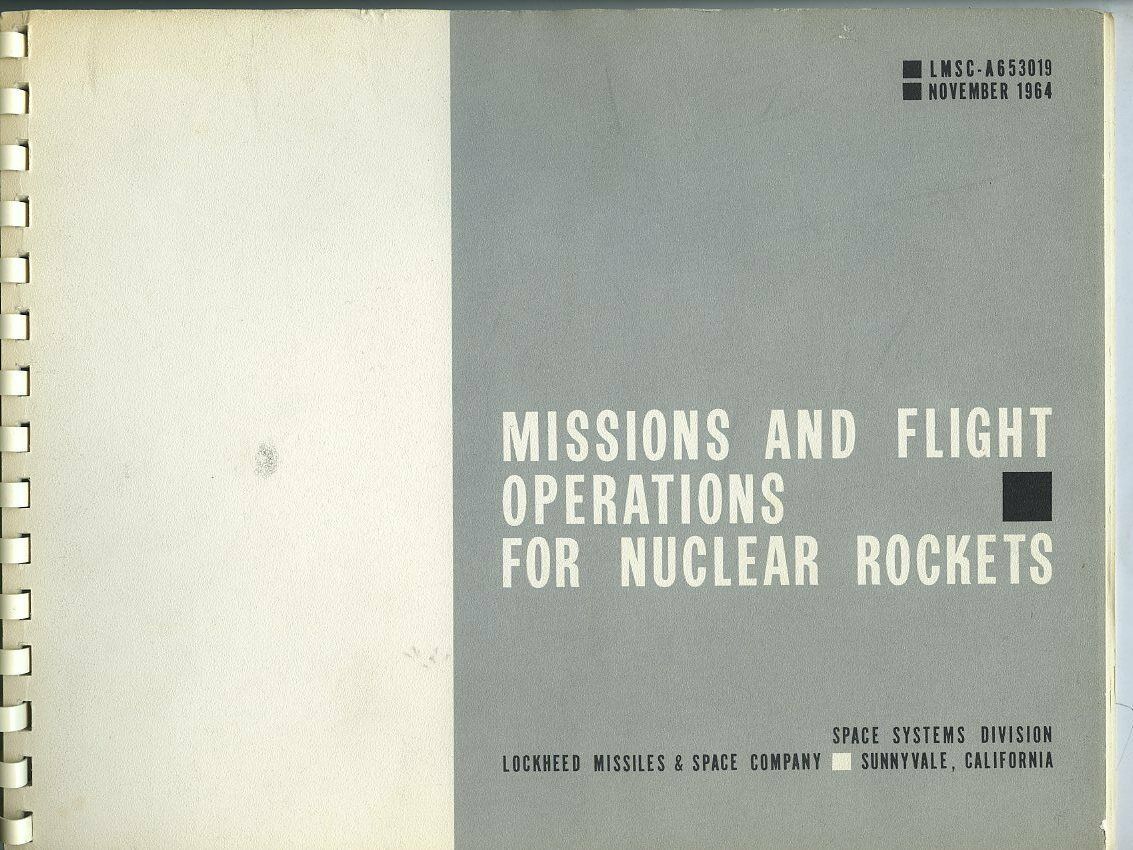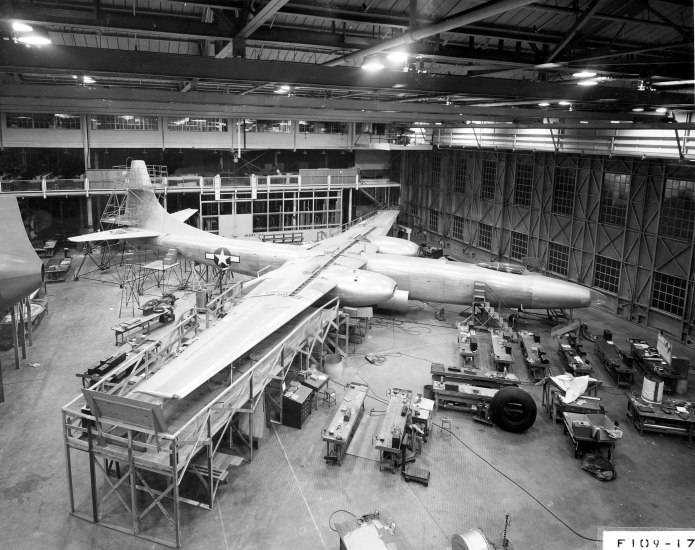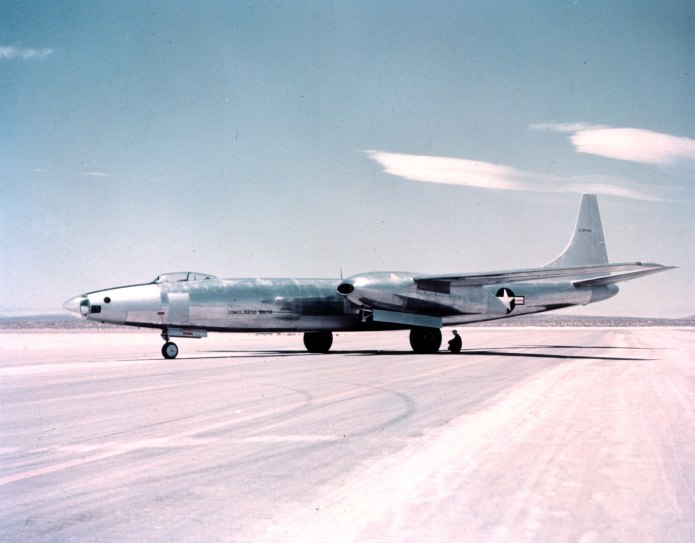The B-60 was Convairs failed effort to compete against the Boeing B-52. It began as a modification of the B-36; the wings were snapped off and swept back, the piston engines were removed and replaced with four turboprops and was originally dubbed the B-36G. When the turboprops were replaced with eight dual-podded turbojets, it was designated the B-60. Compared to the B-52 it was woefully obsolete, with World War II aerodynamics married to Korean War engines; it was incredibly fat and draggy and could not hope to compete with the advanced B-52. Still: it’s a B-36 with jet engines.
A while back someone on eBay sold a few vintage photos. I thought they might be of interest.
